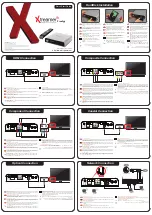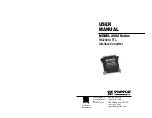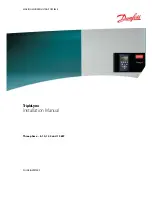
Converteon Media Converter Line Cards Reference Guide
45
on the 100Base-FX fiber optic port. In this way, the media converter
notifies the end-node connected to the fiber optic port that the connection
on the twisted pair port has been lost. If the failure had started with the
fiber optic cabling, the unit would drop the link to the twisted pair port.
The value to this type of network monitoring and fault notification is that
some devices can be configured to take a specific action in the event of
the loss of connection on a port. In some cases, the unit can be configured
to seek a redundant path to a disconnected end-node or send out a trap to
a network management station, and so alert the network administrator of
the problem.
Smart
MissingLink
The Smart MissingLink feature performs exactly the same function as
MissingLink™ with one additional feature. When a link is lost on a port, the
LK LED of the port that still has a valid connection to its end-node starts to
blink. This allows you to quickly determine which port still has a valid
connection (LK LED blinking) and which port has lost its connection (LK
LED Off).
For more information on how the SML LED functions, refer to “Link Test,
MissingLink™, and Smart MissingLink LED Functionalities” on page 98.
For example, if the network twisted pair cable to the 10/100Base-TX port
on the media converter fails, the LK LED on the 100Base-FX fiber optic
port blinks, indicating a failed connection on the twisted pair port. If the
failure starts with the fiber optic cabling, the LK LED on the twisted pair
port blinks.
The value to this type of network monitoring and fault notification is so that
you can quickly see which port has failed and troubleshoot your network
accordingly.
OAM Overview
OAM refers to the tools and utilities to install, monitor, test, and trouble-
shoot a network, helping carriers run their networks more efficiently.
Without management features to monitor and troubleshoot the network, it
is rather expensive and time consuming to have the problems diagnosed
and resolved by having the technicians coming out to the location.
In the enterprise, Ethernet links and networks have been managed via
SNMP. Although SNMP provides a very flexible management solution, it is
not always efficient and is sometimes inadequate to the task. First, using
SNMP assumes that the underlying network is operational because SNMP
relies on IP connectivity; however, you need management functionality
even more when the underlying network is non-operational. Second,
SNMP assumes every station is IP accessible. This requires provisioning
IP on every station and instituting an IP overlay network even if the
ultimate end-user service is an Ethernet service. This is impractical in a
carrier environment.
















































